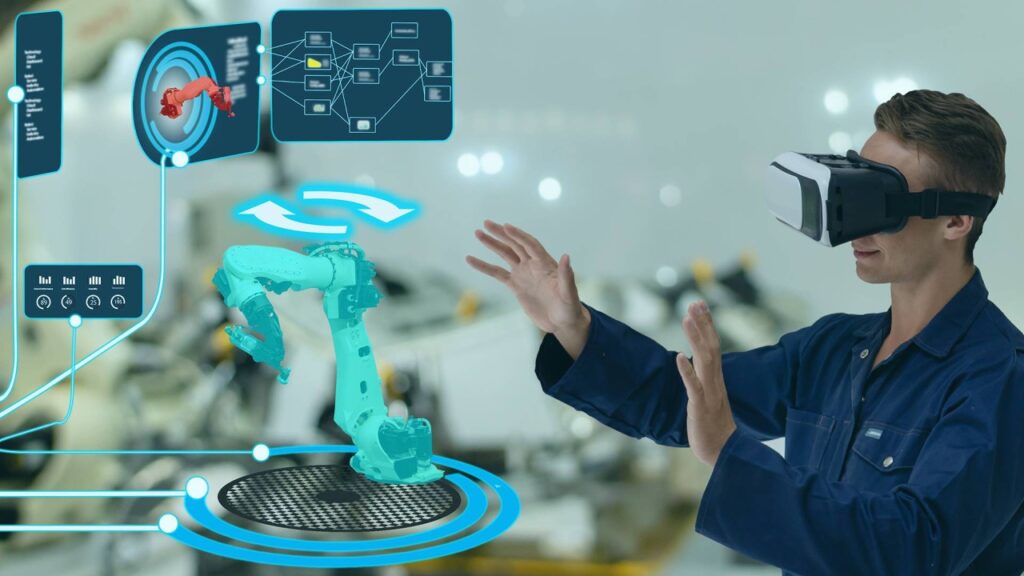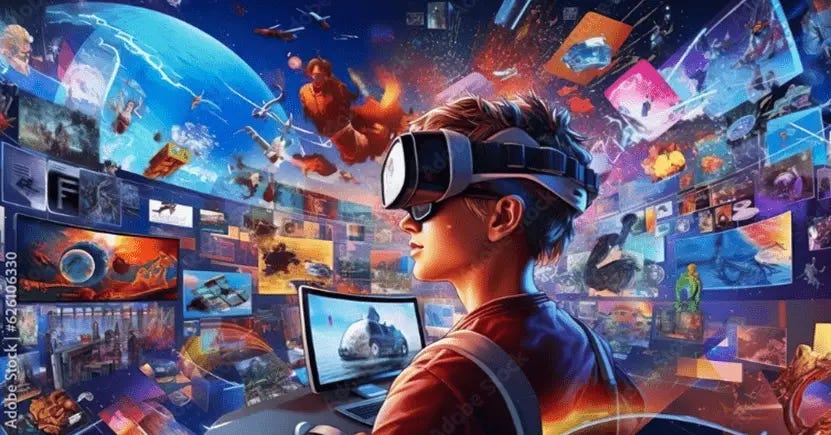
Virtual reality, or VR, has changed over the past several years from being an advanced technology used in the gaming industry to a useful tool across many sectors. Businesses are increasingly adopting virtual reality, particularly in training for employees and engagement. Making sure staff members have been properly educated, driven, and involved is essential for organizational success as businesses fight to maintain their competitive edge. With the potential to create a work environment that is more immersive, engaging, and productive, virtual reality is revolutionizing the way that traditional training and engagement models are designed and implemented.
In this article, we’ll look at how virtual reality (VR) is changing training for staff and engagement, what advantages it brings, and how companies may use this technology to boost output along with job satisfaction.
Understanding Virtual Reality
It’s important that we understand virtual reality’s definition before getting into its potential consequences. Virtual reality (VR) is a computer-generated representation of a three-dimensional space that may be used with specialized gear, such as VR headsets, for interaction. With the use of these gadgets, users may learn about and communicate with things as if they were real-world objects in a virtual environment. Virtual reality is an effective tool for engagement and hands-on learning because of its comprehensive nature.
The Importance of Employee Engagement and Training
Employee engagement is a reflection of a worker’s dedication and motivation in their position. Engagement among staff members improves the overall achievement of an organization because engaged workers are more innovative, devoted, and productive. Disengaged workers, on the other hand, are frequently feeling cut off from the organization’s objectives and core principles, which lowers output and increases turnover rates.
Employee training, on the contrary, aims to provide staff members with the abilities and information they require to thrive in their positions. Increased output, fewer mistakes, and more work satisfaction all depend on effective training initiatives.
The Role of VR in Employee Engagement

1. Immersive Learning Experiences
Virtual Reality’s capacity to provide fully immersive educational experiences is one of the main reasons it is becoming more and more popular in employee engagement. Conventional teaching techniques, including seminars, workshops, or even online learning, frequently fall short of grabbing employees’ attention, particularly when they are inundated with data. On the opposite side, VR gives workers the opportunity to “learn by doing” in a virtual setting. Workers are more willing to participate in training when it feels like they are getting their hands-on experience.
2. Enhanced Collaboration
Engagement is largely dependent on collaboration, particularly in distant or hybrid work settings. Regardless of where they are physically located, VR provides a platform for employees to interact in a shared virtual environment. Because it enables users to collaborate on visualizing complicated concepts and interact with virtual objects, this virtual meeting room has the potential to be more engaging than standard video conferencing.
Visualize a group of engineers creating a novel product. They can work with 3D models, make real-time edits, and have more productive idea discussions in a virtual setting than they can during a traditional video chat. Collaboration at this level promotes a culture of creativity and teamwork and raises engagement level.
3. Gamification of Training
The gamification of training programs has additionally been made possible by virtual reality. Gamification is the practice of bringing aspects of game design—like competition, challenges, and rewards—into the educational process. Employees can be motivated to finish tasks and produce better outcomes by using virtual reality (VR) to replicate real-world problems in a game style, which enhances the training experience.
The Role of VR in Employee Training

1. Safe and Risk-Free Learning Environment
One of the most important benefits of virtual reality training is its capacity to provide staff members a risk-free and secure learning environment. This is especially essential in sectors where mistakes made in the real world may result in serious consequences, such as manufacturing, aviation, and healthcare. Workers may regularly perform risky jobs in virtual reality without worrying about misfortunes or expensive mistakes.
2. Tailored Learning Paths
Virtual Reality (VR) makes it possible to create customized learning programs that meet the demands of each worker. A one-size-fits-all approach is commonly used in traditional training programs, but virtual reality may adjust to the speed and ability level of individual student. VR makes guarantee that learning is more effective, enhancing skill development and retention by customizing the training experience for every employee.
3. Immediate Feedback and Assessment
With VR, training sessions might get real-time feedback. Immediate feedback enables learners to rectify errors promptly, which is extremely important for the growth of employees. When an employee makes a mistake in a virtual environment, they can instantly be notified, giving them the opportunity to modify their behaviour.
In addition, many VR training systems include with performance-tracking assessment tools. One way to determine where further training is required is to study data, including decision-making processes, mistake rates, and time taken for completion. Programs for training are constantly improved for optimal efficacy because of this data-driven methodology.
4. Remote and Scalable Training Solutions
Virtual Reality (VR) offers a scalable alternative for remote training as more businesses embrace remote employment. There is no longer a requirement for employees to physically be there or to travel in order to access virtual training courses. For businesses that operate internationally, this flexibility is very beneficial.
Challenges and Considerations

Virtual reality has many benefits, but there are drawbacks as well that must be considered.
1. High Initial Costs
Purchasing equipment (headsets) and developing personalized software are two of the significant upfront expenses associated with developing and implementing VR training programs. Over time, though, these savings are frequently compensated by the decreased requirement for travel expenses, training materials, and physical places.
2. Accessibility and Comfort
Certain employees might not find VR equipment pleasant, while others might feel uncomfortable or get motion sickness after using it for a lengthy period of time. It’s important to make sure VR training courses are made with the comfort of the user in mind, including breaks and other learning options as needed.
3. Need for Technical Support
Technical know-how is needed to implement VR and keep the system up to date. To guarantee the seamless operation of VR platforms, businesses need to invest in the appropriate IT infrastructure and support.
Conclusion
For a lot of companies, integrating augmented and virtual reality into employee engagement and training programs is already a reality, rather than just an idea for the future. Virtual reality (VR) provides engaging, interactive, and customized learning experiences that boost training results, promote employee engagement, and get workers ready for real-world problems in a risk-free setting. Adopting virtual reality (VR) may be a game-changer for companies trying to remain ahead of the competition, develop a more engaged staff, and build a culture that encourages constant learning and innovation as they continue to advance in the digital era.

